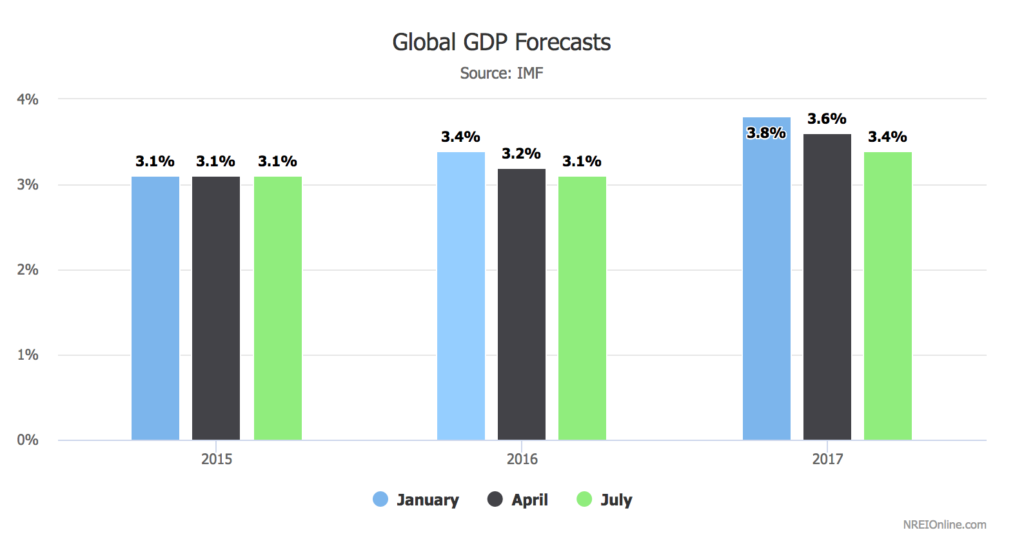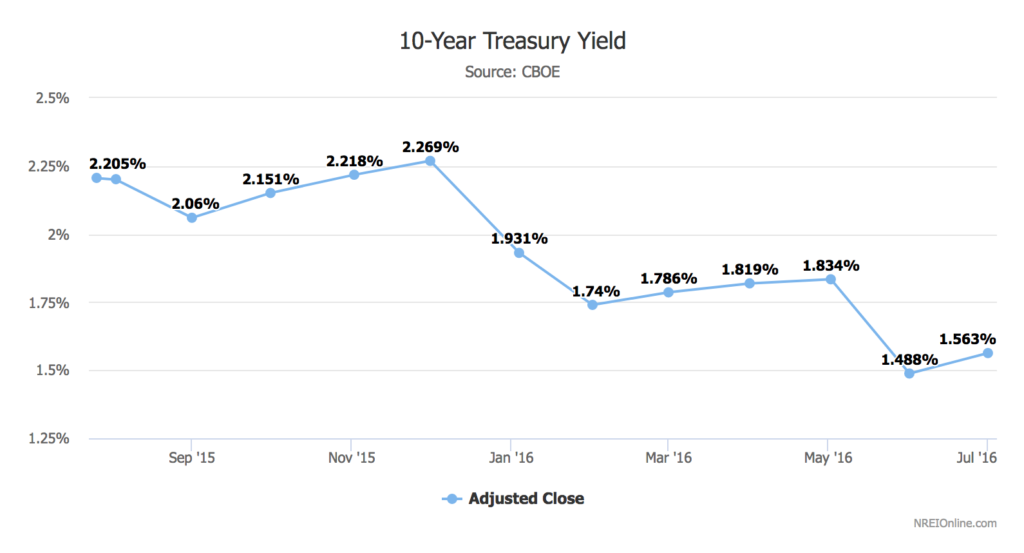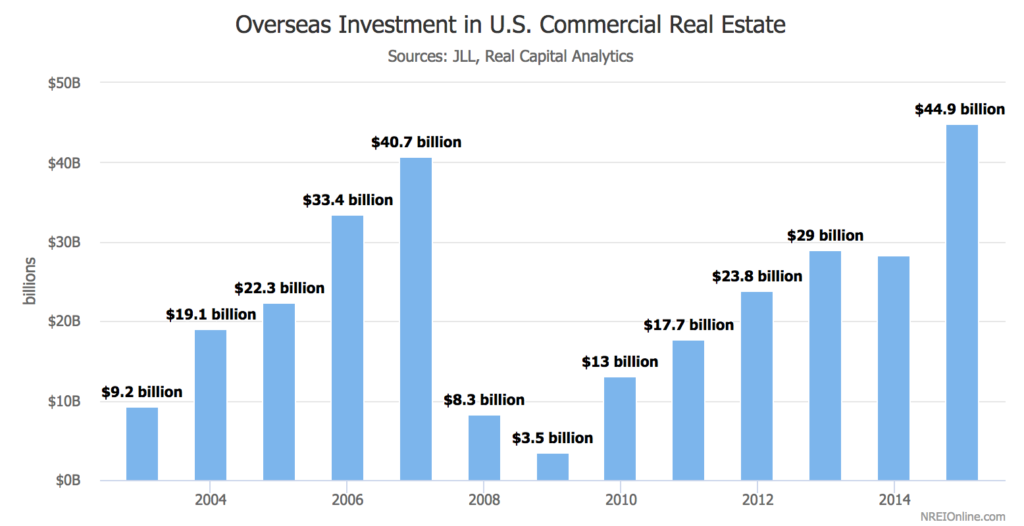The U.S. property market landscape in 2017 will be characterized by continued strong fundamentals, increased investor flows and high transaction volume. As for the economic landscape, the U.S. continues to grow moderately and add jobs. The U.S. employment gains continue to be strong, with unemployment dropping below 5.0 percent earlier this year, and adding to demand for housing in a variety of forms, for office space, for the retail sector and for industrial/distribution facilities. While many fear the end of the current economic cycle, the fact that the recovery was so protracted leads me to believe that we may have another two years left in the current growth cycle.
The U.S. Federal Reserve made it clear last December that the central bank sees U.S. growth as relatively stable, notching the federal funds rate higher by a quarter point. Nevertheless, underlying inflation is extremely tame in the U.S. and in major emerging markets (with worries of deflation in some sectors and countries), providing no impetus for significantly higher rates. Lending rates and fixed-income rates of return will still be very low by historical standards, inducing continued levered purchases of real estate assets.
The following five trends will play a significant role in commercial real estate in 2017.
1. Global economic and political uncertainties. The Brexit vote in the U.K. has added new uncertainties that will not be fully understood, much less resolved, in the near term. The IMF has downgraded global growth twice since January as uncertainties blur the outlook. For U.S. markets—real estate in particular—the impact is likely to be largely positive as U.S. assets become more attractive and valuable to global investors. We can probably expect enhanced inbound foreign investment in U.S. real estate as the U.S. becomes even more of a safe haven. The IMF predicts higher economic growth in the world as emerging markets find their footing and commodities continue their recovery. Stronger global growth is likely to provide more real estate inflows into the U.S. market as the U.S. remains one of the most attractive commercial real estate markets.

2. Low interest and cap rate environment. While it seems fairly certain that the Fed will seek another rate hike before the year is out, it should be minor. The funds rate could be boosted by perhaps 0.25 percent to 0.50 percent in 2016 and the same in 2017, but both inflation and employment appear to be coming in under the Fed’s expectations. With global economic growth lower than expected earlier in the year, the Fed will more likely maintain a ‘wait-and-see’ position in the short term. We still believe that the Fed is more than likely to weigh the effects of each move it makes before adding any additional friction to current (if unspectacular) economic growth trends. Ten-year Treasury yields have been in flux as early concerns about the effects of Brexit have begun to smooth out. Yields, which had fallen to as low as 1.24 percent in the immediate aftermath of the Brexit vote, have risen back to more than 1.5 percent in recent weeks. As concerns about global economic developments ease, we should expect those yields to push back toward a more normalized 1.75 percent to 2.0 percent range by early 2017. The squeeze on cap-rate spreads remains of some concern for real estate investments should rates rise more rapidly than expected, especially with the “frothiness” we have seen in certain gateway, class-A markets. At present, little indication exists that a rate increase will push cap rates dramatically higher. Nonetheless, there are indications that yields may begin to drift upward. And, as pricing in first tier markets stalls and yields hover in the sub–4 percent range in some of the major gateway markets—which are, in some cases, already in peak pricing territory—we should probably expect investors to move more aggressively into secondary and tertiary markets—and to opportunities beyond core assets to core-plus and value-add properties, as well as some of the higher-yielding niche property sectors, such as medical real estate.

3. Foreign investment in the United States. Global economic and political uncertainty continues to drive capital to the United States. International capital flows into U.S. real estate assets will continue—and increase. The U.S. property market is the most stable and transparent in the world, with higher relative yields and price appreciation potential, making it an easy investment choice. And, while slowing growth in China and much of Europe may dampen currencies and incomes over there, there is still abundant non-U.S. capital looking for placement and very strong demand for U.S. assets, as 2015 proved with record inflows. In 2015, foreign purchases of U.S. real estate assets rose to more than $87 billion over the 12 months ending in December, according to the Association of Foreign Investors in Real Estate (AFIRE), with China, Canada, Norway and Singapore all riding the wave. That volume is up from just $4.7 billion in 2009, according to research firm Real Capital Analytics. Among members of AFIRE, a substantial percentage expect to increase investment in the U.S. in 2017. Changes in the 1980 Foreign Investment in Real Property Tax Act (FIRPTA), which now allow foreign investors to be treated in a fashion similar to their U.S counterparts, will likely lead to an increase in foreign investment in the U.S. real estate market as well.



